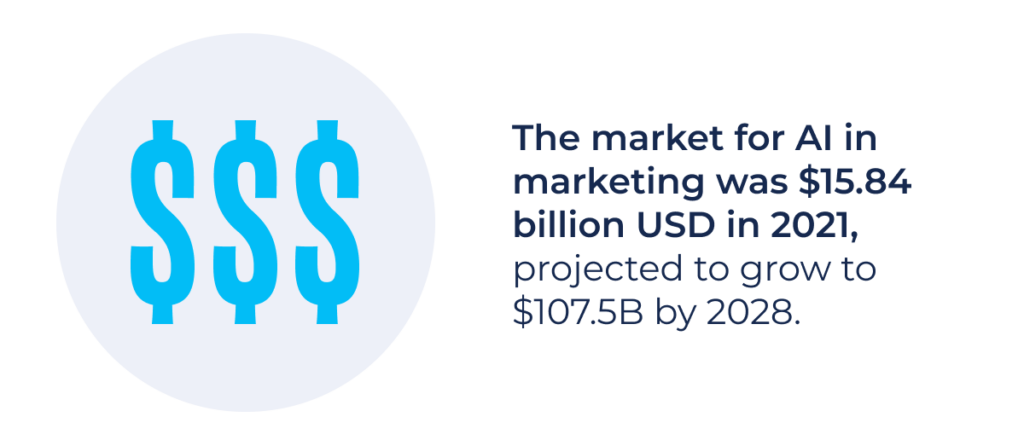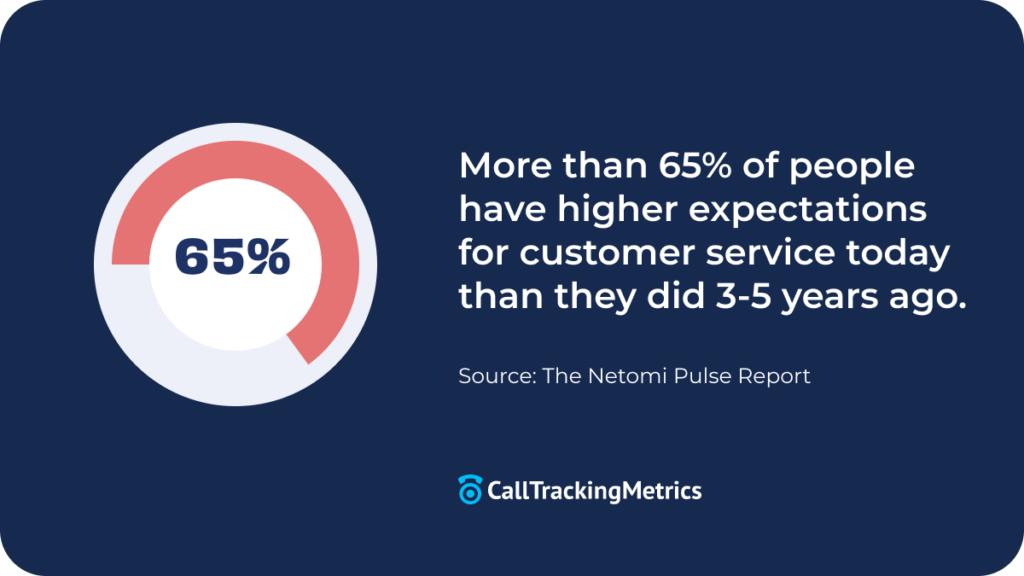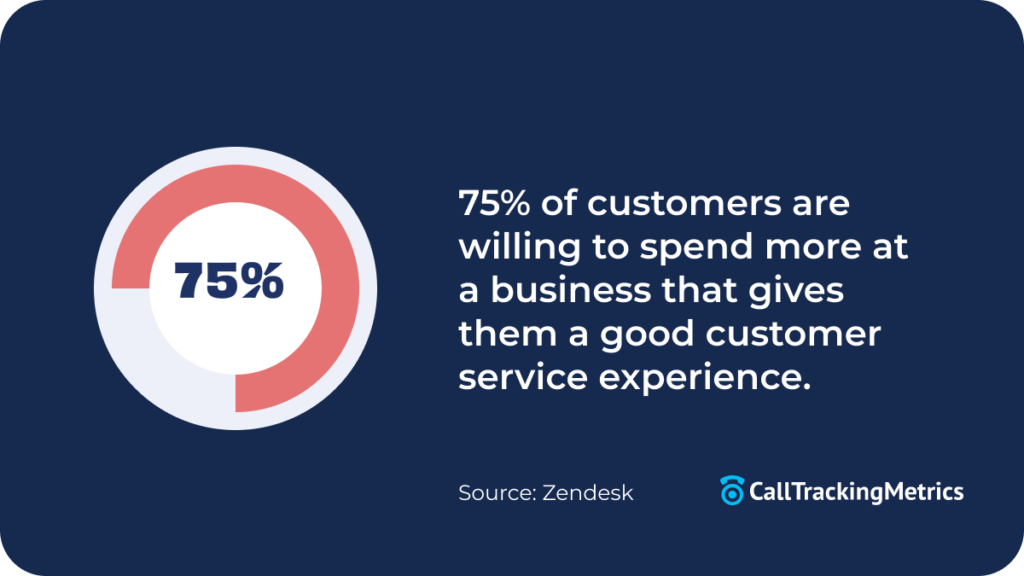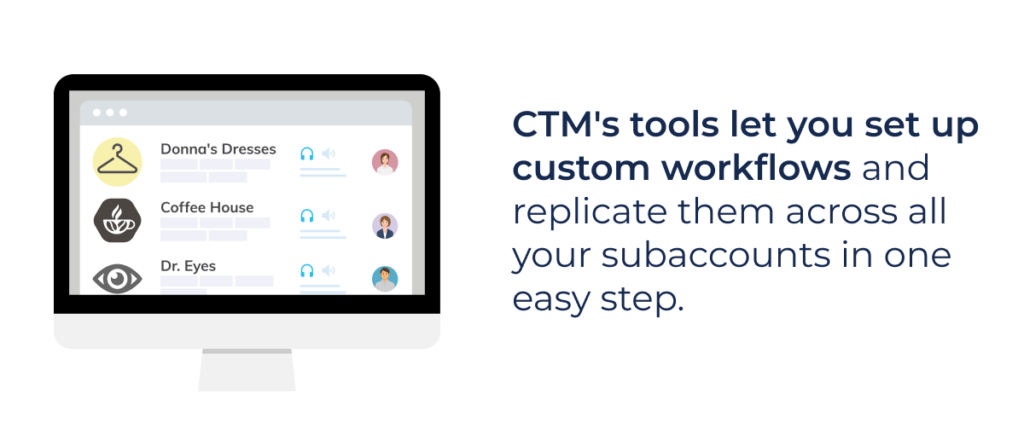Sales Enablement Tools and Marketing Automation
Read Time: 9 minutes
A good sales enablement tool can do a lot to boost the success of your sales and marketing teams–and the entire organization. Relying heavily on marketing automation, the right sales enablement tools help departments like sales and marketing drive revenue by doing more with less and focusing budget dollars where they’re making the biggest impacts.
Sales enablement tools, often powered by artificial intelligence (AI) and utilizing conversation analytics, deliver key benefits to organizations like:
- Empowering sales teams to close high-value deals faster
- Saving teams valuable time and money
- Maximizing the impact of your marketing budget and efforts
- Delivering a superior customer experience–to every customer, every time
When it comes to sales enablement tools, different types focus on executing different tasks. However, all these tools aim to streamline the process for sales teams so they can not only nurture customers down the buyer’s funnel faster but also provide exceptional customer experiences along the way.

Some well-known sales enablement tools include HubSpot, Salesforce, and Zoho for CRM platforms; other types of sales enablement platforms are Highspot, Loom, and LinkedIn Sales Navigator. These are just a few of the many platforms to advance sales enablement through marketing automation. Companies usually use more than one sales enablement tool for the full range of benefits.
If you aren’t using a sales enablement platform, you should. Implementing this tool can help propel your organization to increased revenue and happier customers. And, if you are using a sales enablement tool but want to do more, consider integrating it with another tool.
As mentioned, what a sales enablement tool can do is specific to the platform. The first step is to assess your organization’s needs and goals with this type of tool, then look for tools that offer those features. Also, keep in mind that as you get used to certain features you’ll most likely want to expand, so choose a platform that not only can scale with you but also offers the ability to easily integrate with your existing tools.
Let’s look at some of the most popular sales enablement tool capabilities.
4 Indispensable Capabilities for Sales Enablement Tools
There’s a lot of competition out there today. Teams need high-powered tools to consistently engage customers and drive sales, no matter where they are in the buyer’s journey. If you want to start using or expanding your use of sales enablement tools, consider these must-haves.
1. Customer Engagement and Communication
Today’s customer is bombarded with commercial messages. If you aren’t delivering the right message at the right time, your competition will. That’s why being able to effectively and seamlessly communicate with your customers is a key benefit of sales enablement.
One type of sales enablement tool helps organizations effectively organize and share marketing collateral between departments and with customers. This enables sales to respond quickly with the appropriate content to help nurture customer relationships.

Another key benefit of these tools is the ability to communicate twenty-four hours a day, seven days a week with your customer through chat, text, and email. Using tools like chatbots and virtual agents, customers who are in different time zones can reach out and get immediate assistance–a feature vital for global organizations. Wait times, transfers, and follow-ups by agents are all decreased. The results? Exceptional customer service and agents are freed up to do more complex tasks.
Here are some ways virtual agents and chatbots help:
- Scheduling appointments
- Troubleshooting basic IT issues
- Answering questions and customer queries
- Qualifying leads
When you’re able to automate these tasks–at any time of the day or night, you’re providing great customer service and improving your team’s productivity and efficiency.
Imagine your sales team starting the workday with a predetermined list of callbacks based on overnight activity and when they’re ready, at the touch of a button, they’re able to begin to automate personalized follow-ups and are alerted when a live person answers.
What’s more, some platforms, like CallTrackingMetrics, have apps that work on both desktop and mobile so teams who are in the field can utilize these communication features anywhere on their cellphones. No matter when or where your customers reach out, from our phone tools like the Softphone, Smart Router, and IVR menus, to our digital tools like FormReactor® and LeadReactor, CTM has your customer communications covered!
2. Conversation Intelligence and AI
Lots of data from all your customer interactions in one place is great, but how do you assess and utilize that data? Conversation intelligence and conversation analytics make that possible. With these tools, you can focus time and money on what’s working and eliminate what’s not. Marketers can create better-targeted messages on the right channels so messages reach the right audience. In addition, sales teams and agents can personalize interactions, anticipate customer needs, and stay a step ahead of the competition.

There are different components to conversation intelligence but generally, conversation intelligence refers to software that uses artificial intelligence (AI) and natural language processing (NLP) to not only identify but also respond to cues from verbal conversations. The technology used in the software and the ruleset developed determines the full capabilities of each platform.
Here are some of the most sought-after features of sales enablement tools using conversation intelligence:
Sentiment Analysis
Using AI and NLP, sentiment analysis helps teams determine what their visitors’ intentions are when they are interacting with your brand. Intent types are:
- Commercial
They want to learn more about brands or services.
- Informational
They are seeking information or educational-type materials on a topic.
- Navigational
They are trying to navigate to a specific page.
- Transactional
They want to complete an action (conversion).
In addition, these technologies can be used to assess sentiment, which helps marketing teams better understand how their ads are being perceived by consumers. Sentiment, which uses conversation analytics, is generally divided into:
- Positive
- Neutral
- Negative

Pairing intent with sentiment analysis helps teams get a deeper understanding of their customers at each stage of the buying process. This insight enables entire organizations to provide exceptional customer service at every stage of the funnel.
AskAI powered by ChatGPT
Another quickly evolving way to engage with your customers is through ChatGPT and OpenAI-powered tools. These tools, like CallTrackingMetrics’ AskAI-GPT, let users ask any natural language question and get a concise ChatGPT-powered answer. These responses can then be automatically sent to prompt follow-up workflows or to easily report on.
Transcriptions and Keyword Spotting
Software that can take verbal conversations and not only transcribe them in minutes, but also translate them into different languages, is a vital component of a sales enablement tool. With transcribed conversations, conversation analytics tools like keyword spotting can be applied to analyze conversations and automate the next steps. This helps teams:
- Determine which keywords are driving the most valuable conversions
- Detect any potential issues in how messages are being perceived
- Find ways to enhance products or services
- Engage with customers faster, twenty-four hours a day
- Provide exceptional customer service
- Deliver the right messages, at the right time

Using sales enablement tools you can customize what you want to look for in conversations as well as exactly what you want to happen when certain keywords are spotted. Not only do these tools provide important information about customers, but they also follow the strictest privacy and security policies. With the demise of third-party data, getting this information while respecting your customers’ privacy is a priority.
Sales enablement tools and marketing automation tools offer a broad range of capabilities. Remember it’s important to consider your specific goals as you either begin to use these tools or expand your use.

3. Customer Management
Most businesses today have more than just a handful of customers. Keeping track of the details of each customer can make it hard to provide a personalized experience. The bigger your organization, the harder it is. This can result in frustrated customers, wasted time, and lost opportunities to capitalize on leads with the right marketing materials at the right time.
With marketing automation and sales enablement tools, customers can immediately be routed to the same agent they spoke with last time, or if they aren’t available an agent in the same department. This is where another important feature comes into play. Some sales tools offer one centralized location to keep track of the details about your customers and their interactions with your business.
That means when your caller, chatter, or texter is routed to an agent, they already know caller details before they engage, eliminating the need for the customer to repeat the information and enabling the agent to personalize the experience and move them down the sales funnel faster.
This information is displayed in a dashboard or call log window in most cases so it’s easy to gather data at a glance. Marketers can also use this information to get a deeper understanding of who the target customer is and what they need, fine-tune buyer personas, tailor messaging, and determine which communication channels provide your audience with the best answers.
Advanced platforms offer tools similar to ChatGPT and OpenAI. These tools take all levels of sales enablement to the next level. One of the ways it can help is to create simple two to three-sentence summaries of communications with your customer. This means before your agents engage with a customer reaching out, they can find out in just a few seconds the topics and outcomes of other interactions.
4. Integration Options
Most sales enablement tools only provide full capabilities when paired with other tools–ones most marketers already use. As mentioned, different enablement tools are capable of different functions, so being able to easily sync with your current tech stack is important to maximize benefits.
Tools usually integrate with the most popular software like Salesforce and HubSpot. However, organizations often use more niche types of tools that aren’t always turnkey integrations. This makes it important to choose sales enablement tools that offer no-code, open APIs. With these features, developers can sync customized tools or less popular ones so data flows seamlessly between platforms.
Keep in mind that, as your organization grows, you may want the flexibility to integrate with other platforms. An open API allows organizations to do this so they can easily scale and adapt.
These tools like HubSpot, Google Ads, GA4, and Salesforce, for example, send data to one main platform, like CallTrackingMetrics, so data from all sources is in one, easy-to-access place presented in an easy-to-understand dashboard. These integrations are essential to get closed-loop attribution and a full picture of your marketing and sales efforts.
Getting this data into one place is a great benefit of sales enablement tools. However, what you do with the data once you have it is another story. Sales enablement tools, powered by AI, help you use the data to drive revenue by knowing what your customers are saying, where they are interacting with your brand, and what their intentions are. Conversation intelligence is crucial in this process.
What Else to Consider
Connecting Offline Activity Data
Being able to slice and dice all this data and learn about the online behaviors of your customer is great. But what’s even better is connecting customer behaviors offline with it. Call tracking makes this possible. With the right call tracking platform, you can easily connect the phone calls your customers are making with digital activity. This way teams can connect any conversation–phone, text, chat, or form–back to its online or offline advertising source closing data gaps so you get full visibility into all of your efforts.
Scaling and Customizing
As mentioned, it’s important to consider your growth goals when you buy this type of software. If your organization plans on any significant growth, be sure to choose a platform that can grow with your business.
In addition, certain industries, like marketing agencies, need to customize different client accounts in different ways. Some software platforms just can’t accommodate this and box marketers in too much. Find a platform like CTM, a highly-customizable tool built with agencies in mind.
Users
Sometimes a deal seems too good to be true–and it often is. When you’re considering software that supports sales enablement and marketing automation, be sure to see how you’re charged. Often, these types of software tack on lots of extra dollars for more than one or two users. If your organization is larger or planning to grow, be sure the platform won’t eat a hole in your pocket when you need to add extra users.
Marketing Attribution
Not only is it important to know where your customers are interacting with your brand, but it’s also important to know which touchpoints make them convert, which grab their attention, and which may make them disengage. Multi-touch attribution gives insight into numerous consumer touch points along the buyer’s journey. This helps to align sales and marketing teams, fine-tune ads and campaigns, and consistently prove ROI and drive revenue.
Dashboards and Reporting
Now that you have all that information, how do you assess it all and report on it to your executive team or stakeholders? It’s essential to have a platform that lets you take all the data from various sources and automatically populate it into a visually pleasing dashboard where you can seamlessly filter and create the exact reports you need.
A platform with robust analytics and reporting features will be important in order to accurately assess data, easily build reports, and be armed with what you need to prove ROI in every meeting, for every campaign. When all of your data is in one place, easy to view, and easy to report on, it saves time no longer having to build complex reports pulling from different sources.
Conclusion:
Sales enablement tools and marketing automation can do a lot to take sales, marketing, and an entire organization to the next level of success. They offer a lot of different features so it’s important to set your goals and clearly align them with the platform you use.
CTM offers a wealth of sales enablement and marketing automation tools. Check out our video to learn more about call tracking and how it empowers teams and stretches marketing budgets.